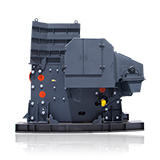Jaw vs Cone Crusher for Limestone Crushing: Key Selection Factors
When processing limestone, the choice between jaw crusher and cone crusher depends on several critical factors. Understanding these elements will help optimize your crushing circuit for maximum efficiency and product quality.

1. Crushing Stage Requirements
For primary crushing of large limestone boulders (>500mm), jaw crushers offer superior performance with their robust design and ability to handle oversized feed material. The compressive crushing action efficiently reduces run-of-quarry stone to manageable sizes.
Secondary and tertiary stages requiring precise shaping and sizing below 80mm benefit from cone crushers. Their interparticle crushing mechanism produces superior cubical aggregates, particularly important for high-specification applications like concrete or asphalt production.

2. Product Specifications
Coarse aggregate production (20-40mm) can often be achieved with a single jaw crusher setup, though additional screening may be necessary for tight size control. For fine aggregates or powders (<5mm), cone crushers provide better control over particle size distribution. In demanding applications, combining a cone crusher with a vertical shaft impactor (VSI) further enhances particle shape and gradation.

3. Operational Considerations
Jaw crushers present a lower capital expenditure option for primary crushing but may require additional downstream processing. Cone crushers, while having higher initial costs, typically offer lower long-term operating expenses through improved energy efficiency and reduced recirculation loads.
Material characteristics significantly influence crusher selection. Jaw crushers demonstrate better performance with moist or sticky limestone due to their straight-through design minimizing clogging risks. For abrasive or harder limestone formations, cone crushers with specialized liners provide better wear resistance in secondary applications.
4. Practical Application Scenarios
Small-Scale or Budget-Constrained Operations
A standalone jaw crusher provides a cost-effective solution for primary reduction. When finer products are needed, supplementing with an impact crusher offers a more economical alternative to cone crushers while still achieving acceptable product quality.
High-Quality Aggregate Production
A two-stage system combining jaw and cone crushers delivers optimal results. The jaw crusher performs initial size reduction, while the cone crusher refines the product to meet stringent specifications. This configuration proves particularly valuable when producing materials for critical applications requiring precise gradation and particle shape.
Large-Scale Quarry Operations
High-volume operations benefit most from a complete crushing circuit incorporating both jaw and cone crushers. This setup maximizes throughput while maintaining product quality, with the jaw crusher handling the primary reduction and cone crushers producing the final product. The system's efficiency reduces recirculation loads and minimizes downstream processing requirements.
5. Operational Best Practices
Proper maintenance planning is essential for both crusher types. While limestone's relatively low abrasiveness extends wear part life, maintaining an inventory of critical components (jaw plates, cone liners, mantles) minimizes unplanned downtime. Regular inspections and preventive maintenance programs help optimize crusher performance and longevity.
Dust control measures deserve special attention in limestone processing. Implementing water spray systems or dust collection equipment helps maintain acceptable working conditions and complies with environmental regulations. These systems prove particularly important in dry crushing operations or when processing fine materials.
For operations facing variable feed characteristics or frequently changing product requirements, the flexibility of a jaw-cone crusher combination provides significant advantages. This configuration allows operators to adjust the crushing circuit to accommodate different feed sizes or produce various product gradations as market demands shift.
The selection between jaw and cone crushers for limestone processing involves careful consideration of multiple factors:
- Jaw crushers excel in primary reduction applications, offering robust performance with lower capital costs;
- Cone crushers provide superior product shaping capabilities and finer size control in secondary and tertiary stages;
- Material characteristics, product requirements, and operational priorities all influence the optimal crusher selection;
For most limestone processing applications, a combination of jaw and cone crushers delivers the best balance of performance, product quality, and operational efficiency. This approach accommodates varying feed sizes while producing materials that meet diverse market specifications.







